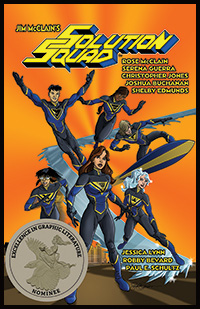As a relatively new player and a wannabe gamemaster for the roleplaying game Star Trek Adventures, published by Modiphius, I read the rules, watched a few videos, but nothing ever teaches me a game quite like being a player. I pay attention to how a game works from more experienced players, and I really pay attention to a gamemaster who is patient and takes the time to explain everything that we players are doing and can do. ‘Nathan Burgoine is the guy who runs the game I play in, and he’s exceptional. He always offers alternatives and is aware of the talents that our characters have and points out our individual options.

The economy aspect of Star Trek Adventures is something I really didn’t get a feel for while reading the rules. There’s an ebb and flow of momentum and threat. If you’re not familiar with these game terms, momentum are units that you earn that you can spend to increase your likelihood of success in rolling dice, or use to gain more information when you have rolled very successfully. Threat is a unit that you can provide the gamemaster so that he or she or they can do the same thing for the opposition. There is a constant flow of both momentum and threat going on throughout a game session. For this post, I am going to focus on momentum.
One of the key uses of momentum is to increase the likelihood of success when a player rolls the dice to resolve a task. In the Modiphius 2D20 system, a player rolls a base of 2D20 to determine success. They have a target number to meet or roll below, based on two of their combined stats to determine success or failure, and the GM must tell them how many successes on the dice they will need to be successful at the task.
Example: Captain Chamberlain takes over at the helm to make the starship Challenger engage in a fairly tricky approach to the damaged starship Pageant, which is leaking deuterium. The gamemaster declares that the task of flying Challenger in without contacting the deuterium is difficulty two. Chamberlain’s Control score is 11 and his Conn score is 4, so by adding those together, it is determined that he must roll 15 or less on each D20 to earn a success. Since the difficulty is two, he must roll successes on both dice to succeed at the task. Since his chance of success on each die is 3/4, his chance to succeed on both die rolls is 3/4 x 3/4, or 9/16. Yikes, that’s just over 56%. It’s a good thing there’s momentum. In Star Trek Adventures, a player can spend one point of momentum to gain an extra die to add to the chance to succeed. The player can spend an additional two points to gain a second die. A third extra die can be obtained by spending three more momentum, for a total of six momentum, which is the most a player group can bank at any one time. So, basically, you can spend:
1 momentum = +1D20
3 momentum = +2D20
6 momentum = +3D20
For our purpose today, I’m only going to talk about the first momentum spend. Additional spends have diminishing returns that make them debatable. So, in the example above, if Captain Chamberlain spends one momentum to gain an extra D20, his chances of success increase from 56% to a whopping 84% (I’m rounding to the nearest whole percent here, I’m not Spock or Data). Furthermore, he has a 42% chance of getting three successes and gaining that momentum spend right back again. The bottom line is that either he’ll get the momentum back again or he needed it to be successful in the first place, because there was a 44% chance that at least one of his first two dice were going to fail. That means that the chance of Captain Chamberlain failing his roll was nearly the same with 2D20 than the chance that he would get his momentum spend right back again with 3D20, and that makes it a good bet. Now, does this always hold up? Pretty much.
Let’s say your combined scores give you a success number of 12. You have a 40% chance to fail, and a 36% chance to get your momentum back with three successes. Still definitely worth it to me, so my philosophy is always spend one momentum on a task if you have one.


